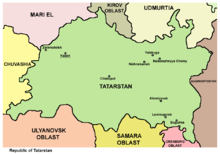 |
The Main Stage, The Royal Opera House
Source Wikipedia
|
When I was an undergraduate I practically lived at Covent Garden during the Christmas, Easter and start of the Summer vacations. The Royal Opera House sent bundles of ticket vouchers to Young Friends which could be exchanged for tickets for the upper slips or two thirds of the cost of the rows H to Q in the amphitheatre and I saw all the great stars - Fonteyn, Nureyev, Sibley, Dowell, Symour and all the other great names of the time. Those ticket vouchers enabled me to see great visiting companies such as American Ballet Theatre, the Bolshoi and even Dance Theatre of Harlem.
I maintained my membership of the Young Friends even when I was a graduate student in California. "You have such neat mail" my fellow students would say when
About the House would arrive. And it was true, I did. It was a little reminder of home like
"Ye Mucky Duck" and the "
Brigadoon" at Santa Monica. I maintained my membership even after I ceased to qualify as a Young Friend at the age of 26. I kept it going even after I had moved to Yorkshire and made the acquaintance of Northern Ballet.
I let my membership lapse only when my late spouse was diagnosed with motor neuron disease. Somehow ballet no longer seemed to matter. In fact very few things did. There is nothing more distressing than watching someone you love shut down limb by limb and organ by organ. Everything in my life went to seed.
But then a month after my spouse died I noticed a postcard on a notice board advertising "Ballercise" classes. I was told that a group of mums had asked the instructor who taught their little ones ballet to lay on a class for them. I was even more overweight than I am now and quite unfit but I joined the class and stuck with it. I struggled through
pliés and
tendus and goodness knows what. Eventually, my teacher invited me to a real ballet class in Huddersfield which led in turn to the over 55 class at Northern Ballet and ultimately
Terpsichore.
Last Saturday I collected my tickets for the
Dutch National Ballet Junior Company I impulsively asked whether I could rejoin the Friends. "Certainly" they replied and remarkably the House still retained my membership records. Today my membership pack arrived and what a delight. My red membership card with the royal coat of arms, welcome letters from Susan Fisher, the new season guide, an invitation to attend the opening night of Carlos Acosta's
Carmen on 26 Oct 2015 (the cheapest tickets being £1,000 per head) and the January and April copies of the Friends' magazine which appears to have superseded
About the House.
The January issue has a great picture of Ed Watson and Wendy Whelan on the cover as well as news of Wayne McGregor's Homage to Virginia Woolf and an essay on the genius of Jerome Robbins. The April issue has articles on Carlos Acosta, Cuba and transition and 50 years of MacMillan's
Romeo and Juliet. When am I going to get round to reading all of that? But does it matter for I feel as though I have come home.
Although I have rejoined the Friends because I love the Royal Opera House and the Royal Ballet there are actually some tangible benefits of membership which are listed on the
Friends page of the Royal Opera House website. This
video explains what they are. I have derived so much pleasure from performances at the House over the years. I do hope this article encourages others to join the Friends too.






